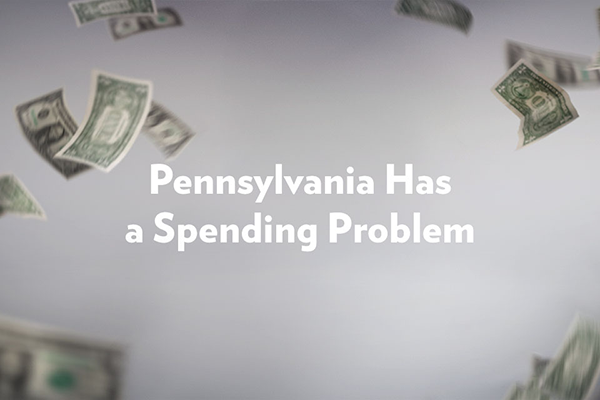Memo

Policy Memo: Analysis of the State Senate’s Revenue Plan
On July 27, the state Senate passed a $1.8 billion revenue package, which includes more than $1.2 billion in borrowing and $570 million in tax increases to pay for the 2017-18 state budget. This would be the second year in a row and the fifth time in the last nine years state government has increased Pennsylvanians’ tax burden. Tax increases and borrowing are not only unnecessary but also counterproductive. Fortunately, House lawmakers can advance real alternatives to balance the budget.
Summary of the Senate’s Half-Billion-Dollar Tax Increase
The Senate’s proposal includes seven different tax increases, totaling approximately $571.5 million—a cost of $179 per family of four in the first year.
This tax package includes broad-based tax increases, which both lawmakers and the governor ruled out earlier this year. The tax hikes would hit millions of households in the form of higher utility bills and sales taxes, which will inevitably force families to make budget cuts of their own.
Taxes Are Not a Solution
The Senate has misdiagnosed the cause of Pennsylvania’s fiscal ills. State residents already face the 15th highest state and local tax burden in the country, and companies face the 2nd highest corporate tax rate in the industrialized world. In addition, Pennsylvania collects the 12th highest rate of income tax revenue per person. The state is not under-taxing working people.
The commonwealth has a spending problem, which won’t be solved with more revenue. The last three years are emblematic of both political parties’ imprudent spending decisions. State spending in just the General Fund budget (which makes up approximately 40 percent of all spending) has risen by nearly $3 billion over the last three years—a total that exceeds the spending increases of the prior eight years combined.
Four Reasons to Forgo a Tax Increase
1. High-Tax States—Like Pennsylvania—Are Fiscally Unstable
The states in the best fiscal health, according to a recent Mercatus Center report, have a tax burden more than one percentage point lower than the states in the worst fiscal health. In fact, a handful of these latter states—New Jersey, Connecticut, and Illinois—have some of the highest tax burdens in the country. Stated differently, higher taxes don’t guarantee a stable fiscal environment.
Indeed, another analysis from the Pew Charitable Trusts found 11 states, including Pennsylvania, were unable to match revenues with expenses from 2002 through 2015. Nine of these states levy tax burdens in the top 15. Instead of fiscal stability, high taxes contribute to instability.
2. Higher Taxes Undermine Economic Growth
Since 1970, Pennsylvania has ranked 49th in job growth and 44th in personal income growth. This perpetual state of economic stagnation—relative to other states—is attributable, in part, to Pennsylvania’s poor tax climate. According to a Mercatus Center report, higher taxes can stunt gross state product, personal income growth and business creation.
These findings are consistent with those of Dr. William McBride. In McBride’s literature review of 26 studies, he found all but three concluded that taxes negatively affect economic growth.
The Senate’s tax hikes are no exception. According to a State Tax Analysis Modeling Program (STAMP) provided by economists at the Beacon Hill Institute, Pennsylvania could lose 3,600 jobs, $932 million in disposable income, and $142 million in lost business investment in the first year alone.
Another indicator of suppressed economic growth is the state’s unemployment rate, which remains higher than the national average.
Policymakers are sure to prolong Pennsylvania’s poor economic performance if they increase taxes on working people.
3. High-Tax States Experience High Population Loss
Pennsylvania is in the midst of a demographic crisis. For the first time in 31 years, the state’s total population declined last year. More than 45,000 residents moved to other states in search of a better life. This migration trend isn’t confined to the commonwealth. A look at the ten highest- and lowest-taxed states shows a clear migration pattern.
The 10 highest-taxed states lost more than 2.3 million people from 2010-2016. Meanwhile, the ten lowest-taxed states saw an influx of more than 1.2 million residents. As the research indicates, states with relatively reasonable tax climates produce more economic opportunities. With this in mind, Pennsylvania should lower its tax burden.
If Pennsylvania doesn’t attract more working-age residents, its fiscal problems will only worsen. The state’s population is set to grow older over the next few decades, putting greater pressure on government services.
4. Non-Tax Options Exist
CF has outlined viable solutions to balance the budget without raising taxes. These include redirecting spending from the shadow budget, allowing private stores to sell wine and liquor, and driving down the costs of welfare spending by implementing co-pays and helping people transition from poverty to self-sufficiency through reasonable work requirements. Another option is for the governor to eliminate spending from the already-agreed-to budget. This includes tens of millions of dollars in corporate welfare.
If lawmakers can’t raise enough revenue through non-tax-hike measures, they should work with the governor’s administration to reduce costs.